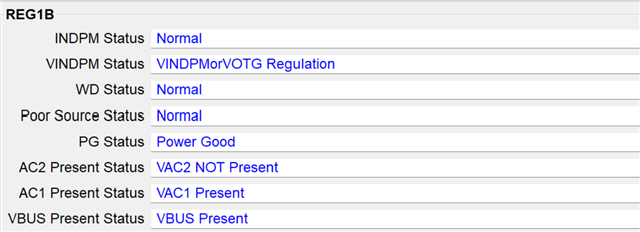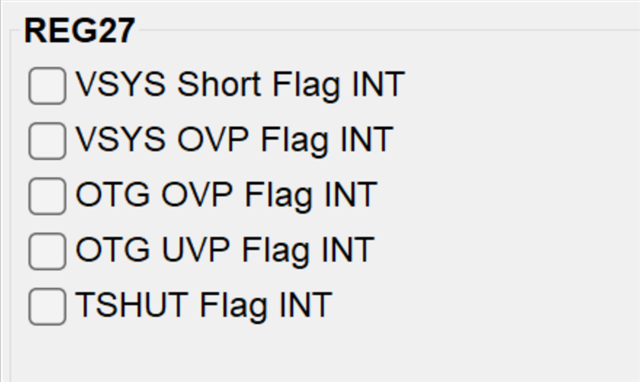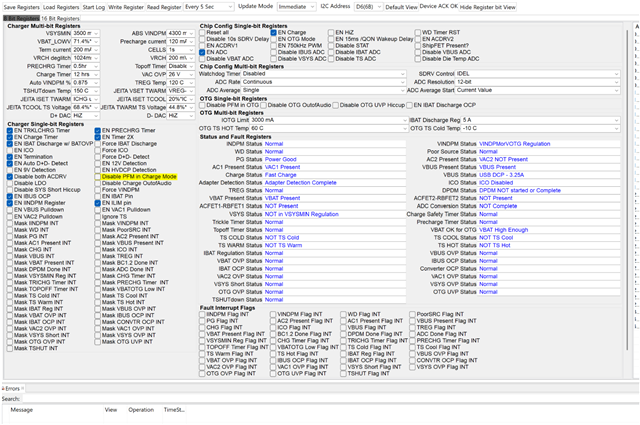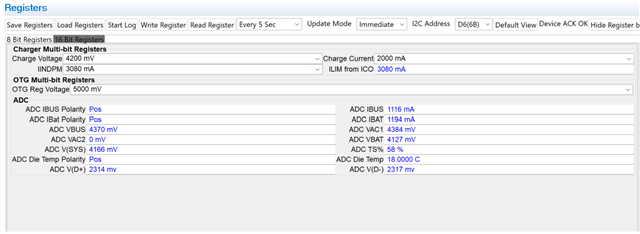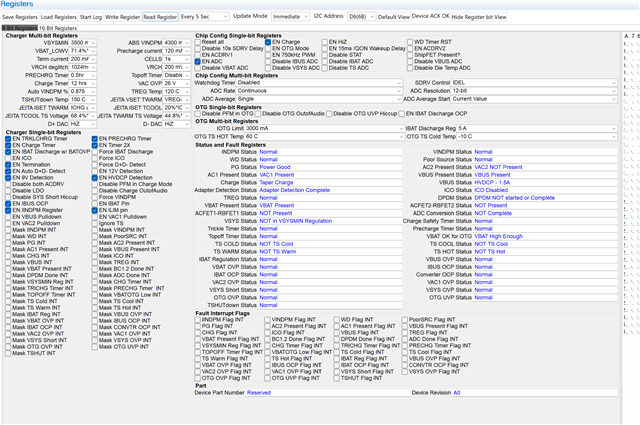Other Parts Discussed in Thread: EV2400
Tool/software:
Hi,
I'm using BQ25792EVM board.
Set PROG to 1S, 2A, 1.5Mhz.
Set ILIM_HIZ to 3A. (changed EVM board R21 to 43K)
Connected ACDRV1, 2 to GND.
Connected JP7 (USB_VIN to VAC1)
Connected JP3 (VAC1 to VBUS)
Connecting EV2400,
The REG03 shows the charge current 2000mA
The REG1C shows fast charging and 3.25A
Enabled ADC (REG2E)
But the REG33 shows 1300mA. I also used current proble double checked it. the max Charging current is around 1300mA.
I also tried setting REG11, EN 9V, and HVDCP. the max charging current still around 1300mA.
We discharged the battery before the test.
Why is the charging current not 2A? What did I miss?



